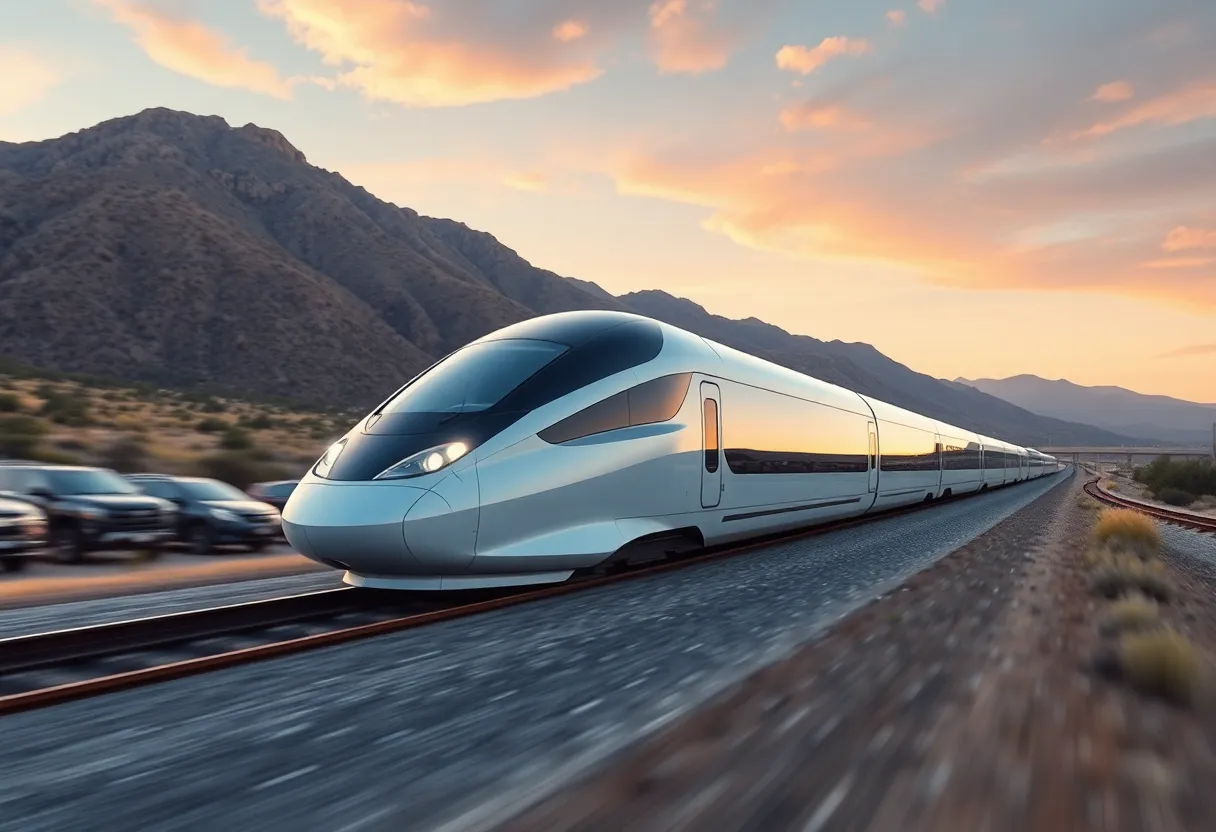News Summary
California Governor Gavin Newsom has signed Assembly Bill 377, which mandates the California High-Speed Rail Authority to create a funding plan for the Central Valley segment of the high-speed rail project. The bill aims to ensure effective use of taxpayer dollars amid substantial project delays and rising costs. As the state faces challenges with federal funding and project management, this new legislation is crucial to help revitalize public trust and advance California’s ambitious transportation initiative.
California – Governor Gavin Newsom signed Assembly Bill 377 on Wednesday, mandating the California High-Speed Rail Authority to develop a comprehensive funding plan for the Central Valley segment of the state’s ambitious high-speed rail project. This crucial legislation requires updated cost estimates, risk assessments, and service initiation options for the Merced to Bakersfield segment, all of which must be included in the Authority’s 2026 business plan.
The Governor emphasized that investing in high-speed rail is vital for California’s future, indicating the significance of this project in addressing transportation needs, economic growth, and environmental concerns in the state. Assemblymember David Tangipa, who authored the bill, stressed the necessity of this funding plan to ensure that taxpayer dollars are utilized effectively and responsibly.
Currently, the California High-Speed Rail Authority is engaged in legal action against the Trump administration, demanding $4 billion in federal funding crucial for advancing the project. Despite facing substantial delays—pushing the operational timeline for trains back to an estimated 2030—the Authority remains undeterred in its vision for a modern transportation system. The overall cost of the project has ballooned from an initial estimate of $33 billion to a staggering range between $89 and $128 billion, raising concerns about financial sustainability.
Under the current state budget, the high-speed rail project is set to receive $1 billion annually for the next 20 years, aimed at completing its initial operating segment. This financial commitment is critical as the project grapples with multiple challenges, including road closures linked to ongoing utility work near the Fresno Chaffee Zoo. Current road closures on Olive Avenue are part of Construction Package 1, covering the first 32-mile segment between Madera County and Fresno County. The closures from West to Carruth avenues will continue from 9 a.m. to 4 p.m. until August 8, with additional closures between Golden State Boulevard and West Avenue expected to last until September 22, operating from 9 p.m. to 6 a.m.
The high-speed rail project has faced significant headwinds, particularly after reports from the previous administration suggested potential withdrawal of federal funding. A federal investigation revealed that the High-Speed Rail Authority might struggle to complete the project, citing numerous issues such as costly change orders and missed deadlines. The report further outlined a lack of a solid plan to address apparent funding gaps, increasing the anticipated shortfall to $14 billion.
As of now, over 70% of the $13 billion that has already been spent on the project has been funded by state sources, with the federal government contributing approximately $6.9 billion since 2009. However, this federal funding has become increasingly precarious amid political disagreements and competing demands for cap-and-trade revenues in the state legislature.
In response to these financial challenges, Governor Newsom has proposed a shift to a cap-and-invest approach, which could extend funding for climate programs, including the high-speed rail initiative. This proposal aims to align environmental goals with transportation development, addressing both the immediate needs of the project and broader climate objectives.
If successfully implemented, the funding plan required by Assembly Bill 377 will play a pivotal role in reinvigorating public trust in the project and ensuring that California achieves its ambitious vision of a high-speed rail system that connects key regions and enhances economic opportunity across the state.
Deeper Dive: News & Info About This Topic
- ABC30: Newsom Signs Bill for High-Speed Rail Funding
- Wikipedia: California High-Speed Rail
- Fresno Bee: High-Speed Rail News
- Encyclopedia Britannica: High-Speed Rail
- San Francisco Chronicle: High-Speed Rail Financing
- Google Search: California High-Speed Rail

Author: STAFF HERE MISSION VIEJO WRITER
The MISSION VIEJO STAFF WRITER represents the experienced team at HEREMissionViejo.com, your go-to source for actionable local news and information in Mission Viejo, Orange County, and beyond. Specializing in "news you can use," we cover essential topics like product reviews for personal and business needs, local business directories, politics, real estate trends, neighborhood insights, and state news affecting the area—with deep expertise drawn from years of dedicated reporting and strong community input, including local press releases and business updates. We deliver top reporting on high-value events such as Oso Fit 5K Fun Run and Community Health Fair, Walk Against Drugs & Community Fair, and National Night Out. Our coverage extends to key organizations like the Mission Viejo Chamber of Commerce and Providence Mission Hospital Mission Viejo, plus leading businesses in retail and education that power the local economy such as The Shops at Mission Viejo, Capistrano Unified School District, and Amazon Delivery Station. As part of the broader HERE network, including HEREAnaheim.com, HEREBeverlyHills.com, HERECostaMesa.com, HERECoronado.com, HEREHollywood.com, HEREHuntingtonBeach.com, HERELongBeach.com, HERELosAngeles.com, HERESanDiego.com, and HERESantaAna.com, we provide comprehensive, credible insights into California's dynamic landscape.


